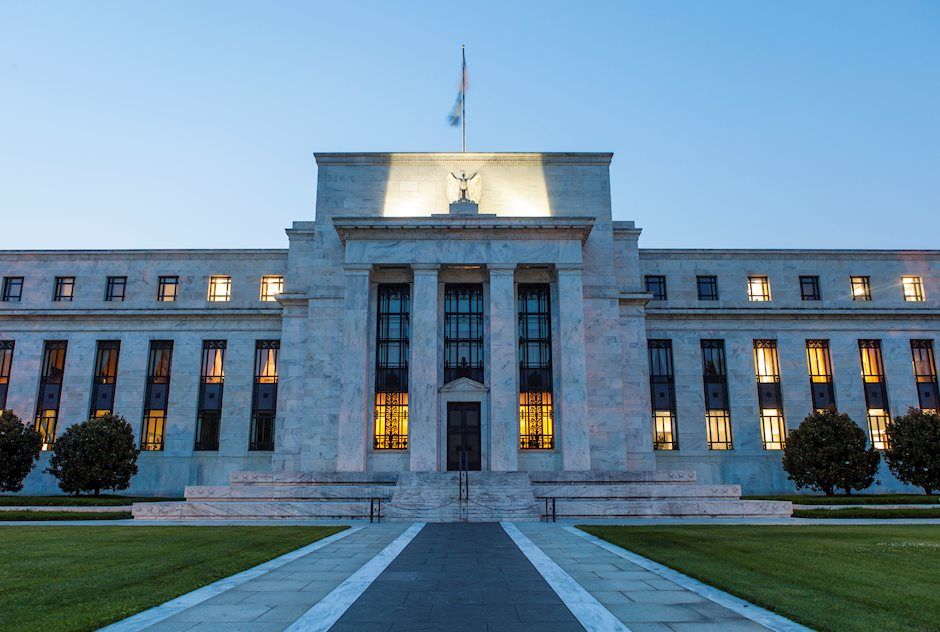Forex Today: Biggest Fed question on size of rate cut will be answered

Here is what you need to know on Wednesday, September 18:
The US Federal Reserve (Fed) will conclude its two-day policy meeting and announce the interest rate decision on Wednesday. For the first time in a very long time, markets are unsure about what the Fed will do and they will finally see whether policymakers will opt for a 25 or a 50 basis points (bps) rate cut. The US central Bank will also release the revised Summary of Economic Projections (SEP), also known as the dot-plot, and Chairman Jerome Powell will respond to questions in a press conference.
US Dollar PRICE This week
The table below shows the percentage change of US Dollar (USD) against listed major currencies this week. US Dollar was the weakest against the Australian Dollar.
| USD | EUR | GBP | JPY | CAD | AUD | NZD | CHF | |
|---|---|---|---|---|---|---|---|---|
| USD | -0.44% | -0.49% | 0.71% | -0.06% | -1.00% | -0.83% | -0.35% | |
| EUR | 0.44% | -0.10% | 1.10% | 0.35% | -0.62% | -0.44% | 0.04% | |
| GBP | 0.49% | 0.10% | 1.12% | 0.44% | -0.53% | -0.33% | 0.14% | |
| JPY | -0.71% | -1.10% | -1.12% | -0.74% | -1.63% | -1.49% | -1.10% | |
| CAD | 0.06% | -0.35% | -0.44% | 0.74% | -1.03% | -0.77% | -0.41% | |
| AUD | 1.00% | 0.62% | 0.53% | 1.63% | 1.03% | 0.18% | 0.65% | |
| NZD | 0.83% | 0.44% | 0.33% | 1.49% | 0.77% | -0.18% | 0.48% | |
| CHF | 0.35% | -0.04% | -0.14% | 1.10% | 0.41% | -0.65% | -0.48% |
The heat map shows percentage changes of major currencies against each other. The base currency is picked from the left column, while the quote currency is picked from the top row. For example, if you pick the US Dollar from the left column and move along the horizontal line to the Japanese Yen, the percentage change displayed in the box will represent USD (base)/JPY (quote).
Following a bearish start to the week, the US Dollar (USD) Index recovered and closed in positive territory on Tuesday, supported by the upbeat August Retail Sales data and the cautious market mood. Early Wednesday, the index holds steady slightly below 101.00. In the meantime, US stock index futures trade marginally higher after Wall Street's main indexes closed virtually unchanged on Tuesday and the benchmark 10-year US Treasury bond yield fluctuates at around 3.65%. According to the CME FedWatch Tool, markets currently see a 61% probability of the Fed reducing the policy rate by 50 bps to the range of 4.75%-5%.
The UK's Office for National Statistics reported early Wednesday that the annual inflation, as measured by the change in the Consumer Price Index (CPI), held steady at 2.2% in August, matching the market expectation. On a monthly basis, the CPI rose 0.3% following the 0.2% decline recorded in July. The core CPI, which excludes volatile food and energy prices, rose 3.6% on a yearly basis, up from 3.3% in July. GBP/USD gained traction following these data and advanced toward 1.3200.
EUR/USD closed modestly lower on Tuesday but managed to stabilize above 1.1100. Eurostat will publish revisions to August Harmonized Index of Consumer Prices data later in the session.
USD/JPY gathered bullish momentum and snapped a five-day losing streak on Tuesday. The pair stays on the back foot in the European morning on Wednesday and trades below 142.00.
Gold reversed its direction after setting a new record-high on Monday and lost 0.5% on Tuesday. XAU/USD stays relatively quiet early Wednesday and fluctuates near $2,570.
Fed FAQs
Monetary policy in the US is shaped by the Federal Reserve (Fed). The Fed has two mandates: to achieve price stability and foster full employment. Its primary tool to achieve these goals is by adjusting interest rates. When prices are rising too quickly and inflation is above the Fed’s 2% target, it raises interest rates, increasing borrowing costs throughout the economy. This results in a stronger US Dollar (USD) as it makes the US a more attractive place for international investors to park their money. When inflation falls below 2% or the Unemployment Rate is too high, the Fed may lower interest rates to encourage borrowing, which weighs on the Greenback.
The Federal Reserve (Fed) holds eight policy meetings a year, where the Federal Open Market Committee (FOMC) assesses economic conditions and makes monetary policy decisions. The FOMC is attended by twelve Fed officials – the seven members of the Board of Governors, the president of the Federal Reserve Bank of New York, and four of the remaining eleven regional Reserve Bank presidents, who serve one-year terms on a rotating basis.
In extreme situations, the Federal Reserve may resort to a policy named Quantitative Easing (QE). QE is the process by which the Fed substantially increases the flow of credit in a stuck financial system. It is a non-standard policy measure used during crises or when inflation is extremely low. It was the Fed’s weapon of choice during the Great Financial Crisis in 2008. It involves the Fed printing more Dollars and using them to buy high grade bonds from financial institutions. QE usually weakens the US Dollar.
Quantitative tightening (QT) is the reverse process of QE, whereby the Federal Reserve stops buying bonds from financial institutions and does not reinvest the principal from the bonds it holds maturing, to purchase new bonds. It is usually positive for the value of the US Dollar.
Author

Eren Sengezer
FXStreet
As an economist at heart, Eren Sengezer specializes in the assessment of the short-term and long-term impacts of macroeconomic data, central bank policies and political developments on financial assets.

















